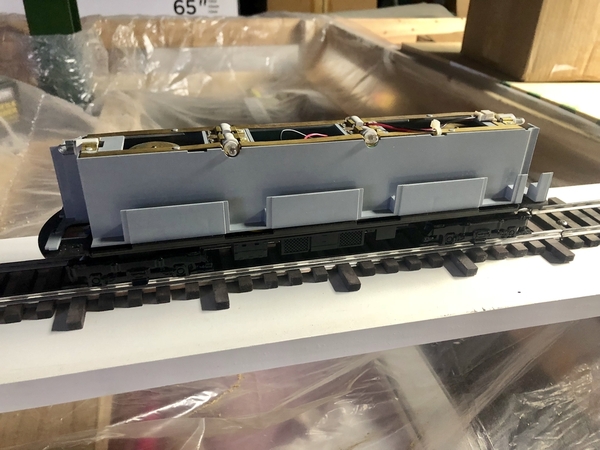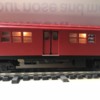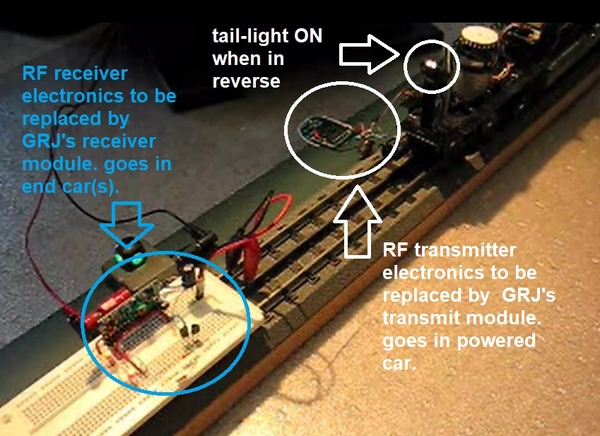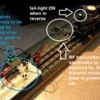So for the record, I offer the following summary of various methods that have been discussed on OGR for directional lighting on subways.
Method 1. Daisy-chained tether from the powered car to/thru intermediate cars and terminating at the end car(s). If done with a wired tether, the power for the lights in the cars can come from the powered car. This means the noisy pickup rollers can be removed all but the powered car. Or the tethers could be wireless. For example, some Lionel engines use a wireless infrared tether to talk between steam engine & tender. I believe the Lionel Acela uses a wireless infrared tether to talk between cars. However, I do not recall anyone actually implementing a daisy-chained tether (wired or wireless) for the matter at hand (end-car directional lighting in a subway consist).
Method 2. Direction sensor on the end car. There is NO communication between the powered car and the end car(s). In this case the end car is responsible for setting its own direction lights based on a sensor. Ideas proposed in OGR threads have included an accelerometer sensor and a wheel-direction rotation detector. The problem with this method is the direction lights only change when the consist starts moving. Again, there has been discussion but I do not recall anyone actually implementing this.
Method 3. Motor control board on the end car used just for lighting. For conventional operation, the end car has an E-unit / reversing-unit. It's "sole-purpose" in life is to provide direction information extracting the DIRECTION button track-power interruptions to alternate the lights. The motor drive electronics is not used. For command control, in the case of MTH subways, a PS2 or PS3 board is placed in the end car. The PS2/3 board essentially "listens" to the same address as the powered car. This seems like an expensive alternative but I seem to recall a relatively recent OGR thread where this was actually implemented. MTH never offered a simple DCS accessory decoders for operating cars like ERR does for TMCC.
Method 4. Wireless signal from powered car to end car(s). This is GRJ's project presently under discussion. In a previous OGR thread I showed a rudimentary version where the tail-light in the powered car turns on an RF transmitter whenever it is on. A simple RF receiver in the end car detects this and turns on its tail-light. This is/was very simple and inexpensive (maybe $5 total) but you could only have 1 subway consist in your train room! That is, whenever in reverse, the powered car is rudely spraying RF energy every which way! As discussed in the long thread about GRJ's project, the trick is to only send a short RF signal when the direction changes..and to only send that RF signal to the intended (addressed) end car.






















